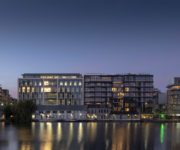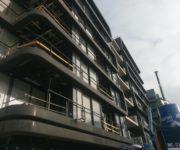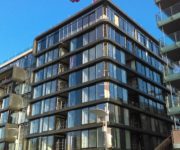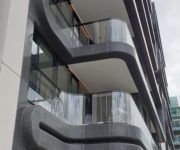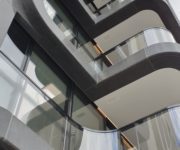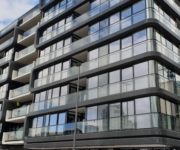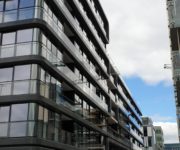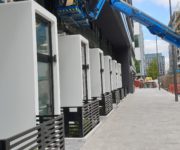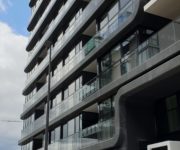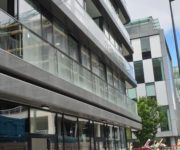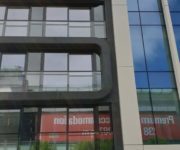Opus, 6 Hanover Quay, Grand Canal Dock, Dublin 2
Opus, 6 Hanover Quay Headline Facts:
Award Winner : ‘Highly Commended’ – Irish Concrete Society Awards 2020
850 reconstructed stone panels, covering 6,700 square meters.
Contractor : Cairn Homes
Architect : McCauley Daye O’Connell
The Finer Details :
Opus 6, Hanover Quay, is a landmark residential development of 120 apartments over 2,600 sqm, located in the heart of Dublin’s Grand Canal Square district. Having gained the nickname “Silicon Docks”, this area has been regenerated from a working industrial dock to become Dublin’s premier business and technology district. The design was developed as a response to the context of the site taking influence from the maritime history, evoked in the dynamic curvilinear form defined by the fluid black horizontal precast bands stretching across glazed façade.
The building cantilevers over the footpath at the front and rear, floating above the tall glass walls. This horizontal band and loop design extends from the waterfront around elegant curved corners at Hanover and Chocolate Park and into and around the ground level and individual lobby entrance door of the inner courtyard. The curtain wall façade with continuous glazed balustrades and curvilinear polished reconstituted stone, reinforces the maritime aesthetic that was key to the scheme. The heavy black, curved panels appear to float over-head, giving the building an exciting and distinctive dynamic.
Techrete were engaged by Carin Homes to design, manufacture and install the precast elements of the striking facade of this McCauley Daye O’Connell designed project. Techrete were chosen for our efficiency in terms of material use, time and quality control that this highly engineered building required, which would otherwise be difficult to achieve.
Techrete’s black mix with a polished finish consists of black basalt, sands and aggregates. Additionally, white cement was used to guarantee consistency of colour and finish between the panels. The elegant tight curved panels were all hand polished. Specially designed moulds were created to overcome the complex geometry of the black precast facade and contrasting white balcony designs. In addition, the panels could only be installed after the glazing which required precision handling. The panels were erected with tight tolerances as any slight movement could have caused breakages to the glazed curtain wall elements.
The concrete floors above ground level consist of post-tensioned slabs, which allows for slabs which use over 20% less RC concrete to be utilised throughout, representing a significant reduction in the overall carbon footprint. This highly engineered construction further allowed the building to cantilever beyond the extent of the ground floor, while still supporting the dynamic precast stone loops providing views and forms, that would otherwise have been unachievable.

